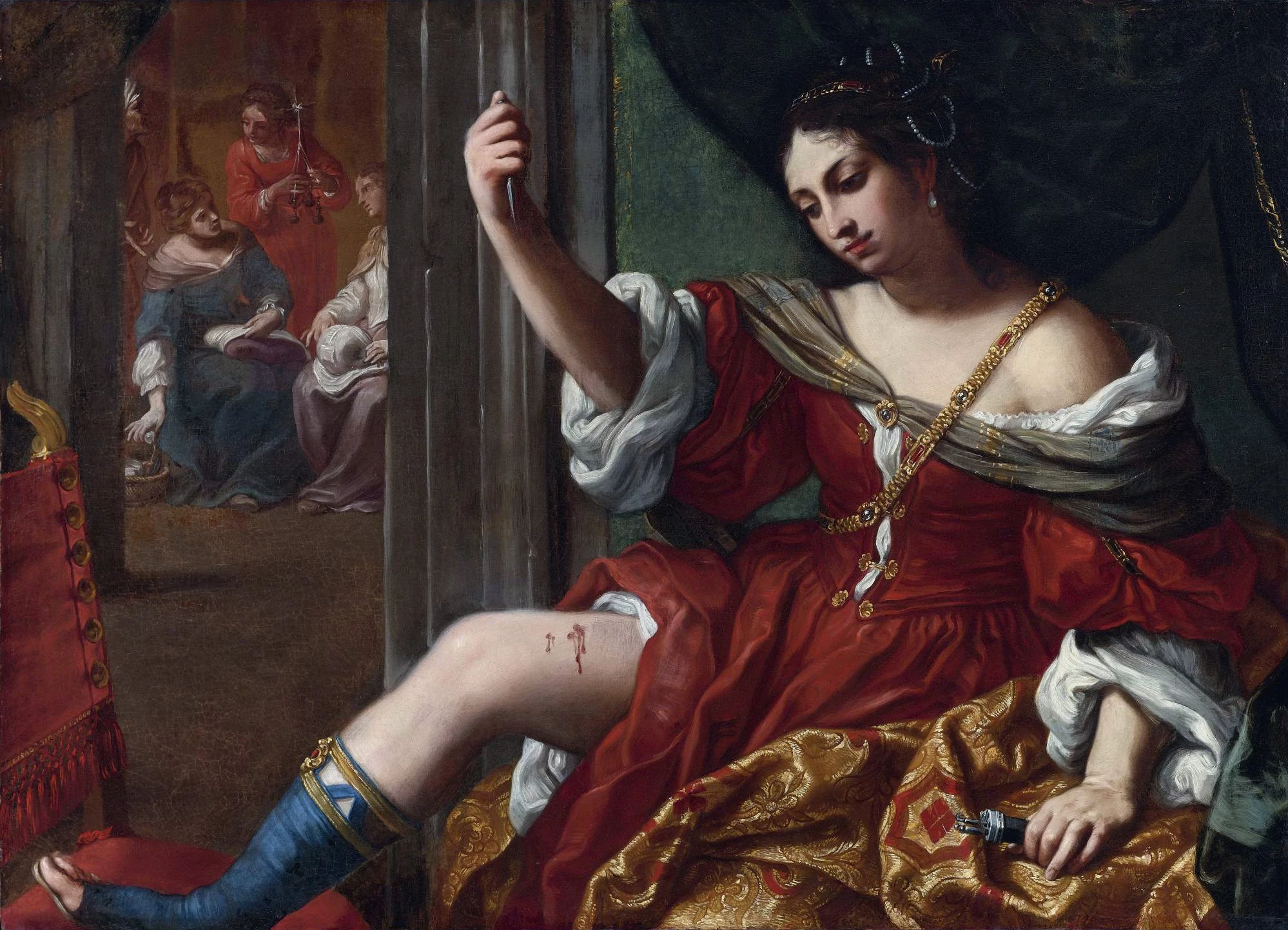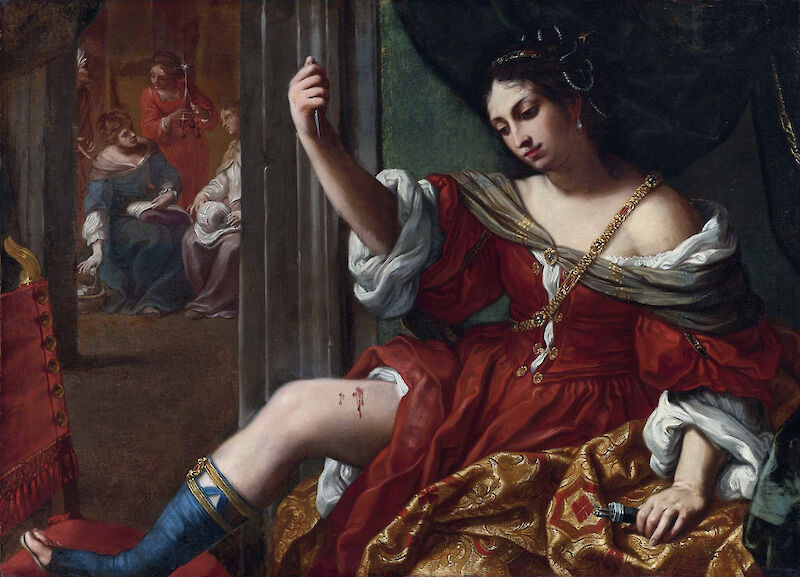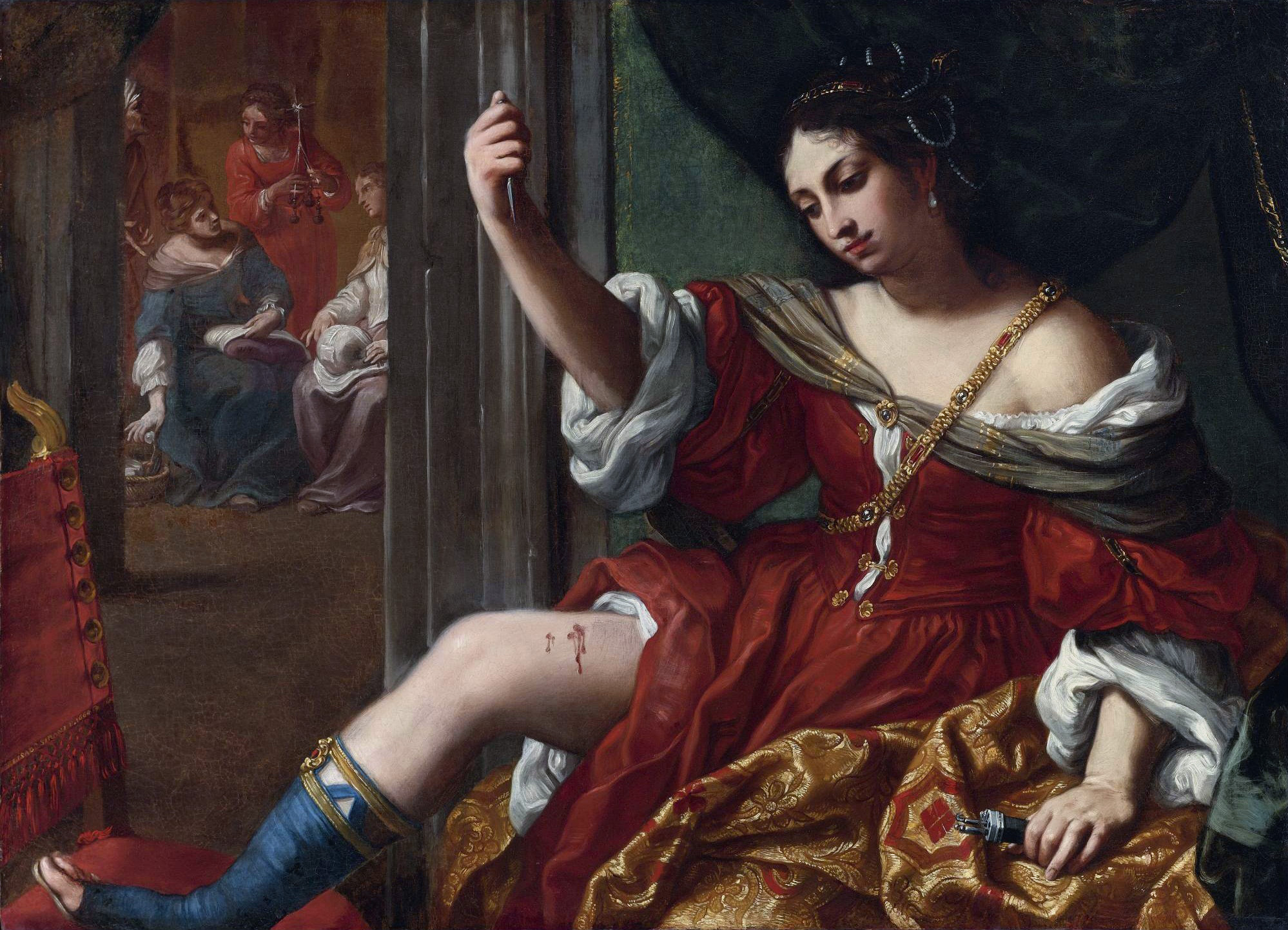


Brutus was hiding something and Portia knew it. Portia was the daughter of a Roman senator, raised in the turbulent intrigues of golden age Rome, and though she was only 26, she'd already spent more than a decade as a political bargaining chip. Brutus was her second marriage to her father’s political allies, and now, almost exactly a year after their wedding, he'd been gathering friends for secret meetings. We don't know if Portia guessed her husband was plotting against the rising authoritarian dictatorship of Julius Caesar, but when she refused to confide in her, she made bloody proof of her trustworthiness.
To prove she would never spill a secret, even under torture, Portia drove a barber’s knife into her thigh, hiding the pain, chills and fever that followed for a day before confronting Brutus, saying, according to the historian Plutarch: “You, my husband, though you trusted my spirit that it would not betray you, nevertheless were distrustful of my body, and your feeling was but human. But I found that my body also can keep silence... Therefore fear not, but tell me all you are concealing from me, for neither fire, nor lashes, nor goads will force me to divulge a word; I was not born to that extent a woman. Hence, if you still distrust me, it is better for me to die than to live; otherwise let no one think me longer the daughter of Cato or your wife.”
The story goes that the pair were interrupted before Brutus could confide in Portia, escalating to the successful assassination of the dictator Caesar, but the story of Portia’s grit has traveled through history.
...
Portia Wounding Her Thigh was completed by Elisabetta Sirani in 1664, when she, like the painting’s protagonist, was twenty-six. Ten years before, Elisabetta’s father fell ill and turned over the management of his studio and the financial responsibility of their large family to his talented young daughter. After a decade of unremitting work, extensive commissions, clever marketing, and expanding the workshop’s school, Elisabetta had made a national name for her fierce and skillful brush and led one of the most successful studios in Bologna.
It’s hard not to see Portia Wounding Her Thigh as a self-portrait. Its energetic brushwork and bright color is a culmination of Elisabetta Sirani’s skill and confidence and its heroine is muscular and brave. But under the rich crimson and strangely serene violence, it’s a portrait of a woman alone. A woman whose lived experience separated her from her peers, and who must turn the tools of the patriarchy against her own body to earn respect in the world of men. Blood, steel, and pain tolerated in silence.
...
Got questions, comments or corrections about Portia Wounding her Thigh? Join the conversation in our Discord, and if you enjoy content like this, consider becoming a member for exclusive essays, downloadables, and discounts in the Obelisk Store.
